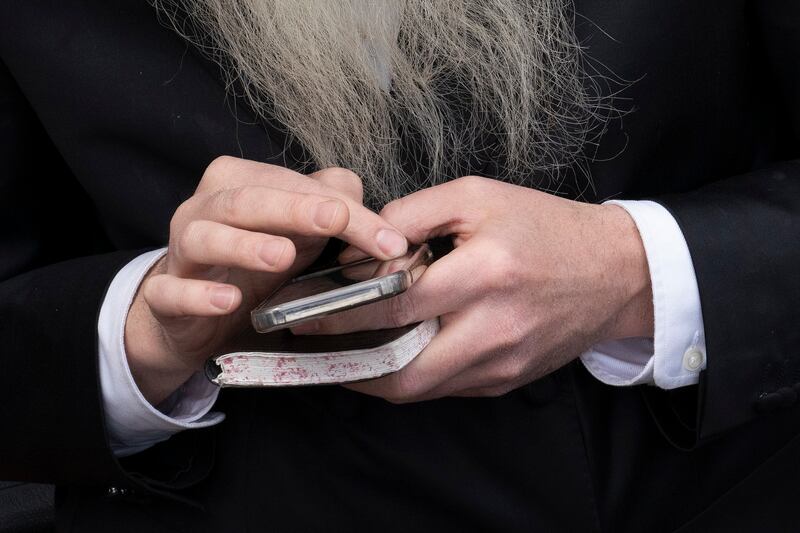Many older adults admit they have felt even more lonely than usual because of the pandemic, according to a survey by Consumer Affairs. While technology offers many ways to combat that loneliness, an AARP study shows older adults have concerns about cost, privacy and whether they’ll be able to learn how to use a device.
Get grandma and grandpa excited by explaining how using tech can help them stay more connected with loved ones. And assure them you’ll help get it all set up and can offer some tech support.
Start by customizing their phone to make it easy to use and truly beneficial for them.
Make text larger
This easy fix can erase some of the frustration that comes with being unable to read what’s on the screen. For iPhone, go to Settings>Display & Brightness>Text Size and drag the slider. Any app that supports Dynamic Type will adjust automatically.
Make the adjustment on an Android phone under Settings>Display>Font Size.
Add Emergency Information
These important details could be critical for first responders or others trying to help. On iPhone, go to Settings>Health>Medical ID to enter birthdate, medical conditions, allergies, medications, blood type and whether the user is an organ donor. Then decide whether this information will be available from the Lock Screen without a passcode. Enabling this feature will allow anyone to hold down the side button and a volume button, swipe on Medical ID and get information without a passcode. In some U.S. cities, users can also allow the iPhone to text this information to 911 during an emergency call.
On Android phones, go to Settings>About phone>Emergency information to enter medical information and set emergency contacts. The lock screen will now have a link to personal details such as blood type, allergies and medications .
Show them how to make an emergency call
Set up shortcuts to call emergency services and alert loved ones when that happens. On iPhone, go to Settings>Emergency SOS and toggle Auto call on. In an emergency, the person in need of help can press and hold the power button and one of the volume buttons. They can drag the emergency SOS slider or continue to hold the side button and volume button for a countdown to begin. A user can also choose to activate this by pressing the side button five times. When the countdown ends, iPhone calls emergency services and then texts emergency contacts with the phone’s current location. It will send updates if the location changes until someone taps “Stop Sharing Emergency Location”.
For Android phones, go to Settings>Safety & Emergency>Emergency SOS to decide which features will be allowed when someone makes an emergency call by pressing the power button five times. Users can decide whether the phone will play an alarm, share information with emergency contacts or even record a video and send it to emergency contacts.
Connect hearing aids with their device
Older adults can use hearing aids as wireless earbuds thanks to Low-energy Bluetooth connectivity. No more taking hearing aids out to use headphones or trying to get just the right position to talk on the phone. For iPhone and iPad, go to Settings>Bluetooth and open the battery doors on your hearing device. Then go to Settings>Accessibility>Hearing and select the hearing device. Close the battery doors on the hearing device. Tap the name of the hearing device and tap Pair. Note that when the hearing device is turned off, it will disconnect from their phone. The user will need to open and close the battery doors on the hearing device to reconnect.
For Android phones, go to Settings>Connected devices>Pair new device. Choose the hearing aid from the list.
While some older adults may be annoyed that declining sight or hearing prevents them from using technology to its fullest, making these adjustments can be a game changer. Knowing that someone who lives alone can easily contact emergency services and contacts also takes some weight off of their shoulders and those of their loved ones. Get grandma and grandpa excited to use their devices again with these features that can help them feel they’re armed with the keys to the digital kingdom.


